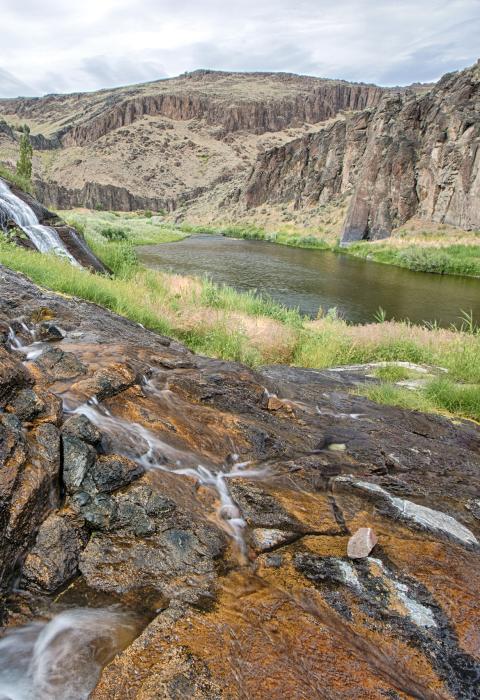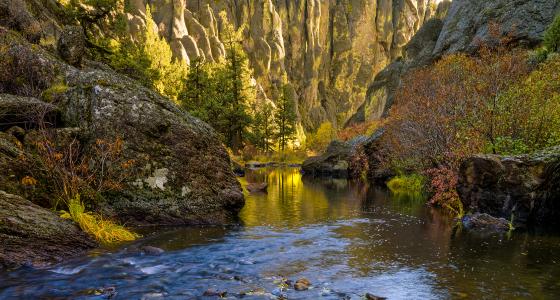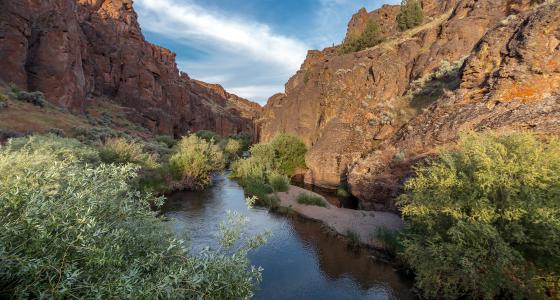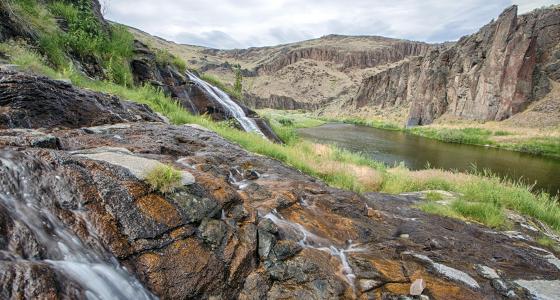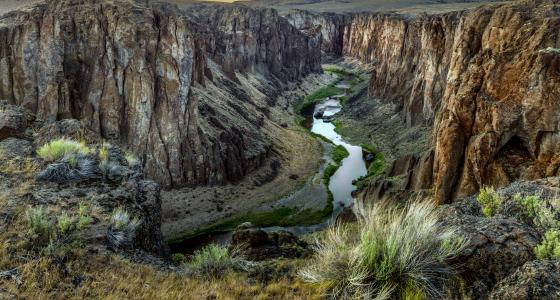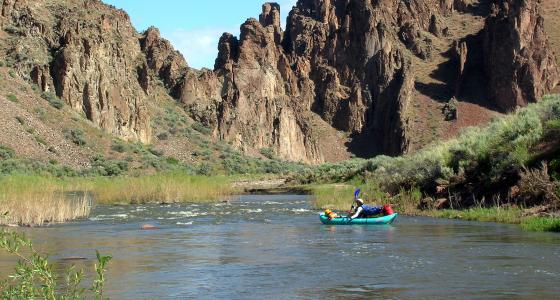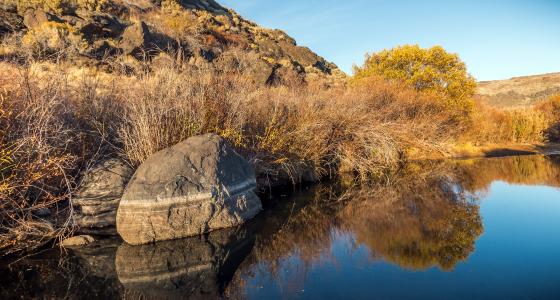Owyhee River
Owyhee River
Oregon
The headwaters of the Owyhee River are found in Elko County in northeastern Nevada. The Owyhee flows north along the east side of the Independence Mountains before it proceeds through southwestern Idaho where it is joined by the South Fork of the Owyhee River before reaching the Oregon border. In 1984, Congress designated 120 miles (193 km) of the Owyhee, beginning at the Idaho-Oregon border downstream to the Owyhee Reservoir (excluding two short segments). The entire segment is classified as ‘wild.’ The Owyhee flows through areas that are remote, arid, and sparsely populated. Much of the river cuts through deeply incised canyons that, along with canyon rims, are home to a rich assortment of wildlife. It has become increasingly popular for recreation despite its rugged nature and limited access.
Designated Reach
October 28, 1988. From Three Forks downstream to China Gulch. Crooked Creek to the Owyhee Reservoir. The South Fork from the Idaho-Oregon border downstream to Three Forks.
Outstandingly Remarkable Values
Geology
Rocks exposed along and adjacent to the Owyhee River range in age from the late Miocene to recent. From oldest to youngest, these groups consist of rhyolitic flows, basalt flows, sedimentary rocks, young lava, and alluvial deposits. Benchlands were formed during a period of intensive volcanic activity. Lava flows filled the stream valleys, damming them and impounding large lakes. Thousands of feet of sediment were deposited in the lakes which were subsequently drained as streams eroded through the basalt dams.
The geologic features are influenced by faulting and warping. A portion of the river valley is structurally controlled by a fault which has down-dropped the east side of the canyon relative to the west side. The colors within the canyon vary from mainly buff or reddish-colored rhyolite and darker basalt to the area called Chalk Basin typified by alternate very dark and chalk-colored deposits.
Prehistory
The Owyhee watershed would have provided the major source of water, fuel, food, and protected campsites in the harsh environment of southern Oregon. Approximately 100 prehistoric campsites have been recorded on the lower segment of the Owyhee River between the Rome Launch Site and Burnt Creek Ranch. The “Hole in the Ground” petroglyph site is one of the most outstanding sites of its kind in eastern Oregon.
Recreation
Outstanding recreation abounds in the canyon, including rafting, drift boating, kayaking, hiking, photography, nature study, fishing, hunting, and camping. The Owyhee is recognized nationally as a prime early season whitewater destination, popular for commercial and non-commercial river runners.
Exploring the canyon on foot provides opportunities for photography and nature study. Despite its limited access and rough terrain, the canyon has become a popular destination for its scenic beauty and unspoiled character.
Sport fishing includes remnant populations of rainbow trout and excellent populations of catfish and smallmouth bass. Mule deer, California bighorn sheep, pronghorn, chukar, quail, and sage grouse provide great viewing, study, photography, and/or hunting opportunities.
Scenery
The canyons of the Owyhee River are dramatic, awe-inspiring landforms. Reddish-brown canyon walls, sharply contrasted by the colorful, eroded chalky cliffs, reach up to 1,000 feet above the pristine sagebrush and grass-covered and talus slopes that form the river’s edge. Cliffs occasionally drop hundreds of feet directly into the river. The canyon rims are often eroded into a multitude of towering spires, while in other areas the canyon walls reach to the sky as fractured, blocky monoliths tinted with brilliant green, yellow, and orange microflora.
Numerous side canyons offer an element of mystery as they twist out of sight, and honeycombed cliffs and perched rock formations add intriguing textures and colors to the vertical landscape.
The drop-and-pool river offers thrilling whitewater, and slow-moving, serene pools provide boaters with an excellent opportunity to view an ever-changing scene of water and land forms.
Wildlife
The Owyhee River Canyon provides diverse habitat for over 200 species of wildlife. Birds are especially abundant, both in number of species and number of individuals. Swainson’s, ferruginous, and red-tailed hawks, as well as American kestrels and northern harriers are common, and prairie falcon and sharp-shinned hawks have been observed frequently. Golden eagles are abundant year-round, and bald eagles winter in the canyons.
Riparian vegetation attracts unique populations of songbirds, and upland game birds include large populations of chukar partridge, California quail, and Hungarian partridge. Mourning doves visit during breeding season, and sage grouse are common in mixed sagebrush habitat on the upland benchlands. Winters see large numbers of Canada geese, mallards, redheads, teals, scaups, mergansers, and grebes.
California bighorn sheep are present, as are mule deer, pronghorn antelopes, cougars, bobcats, and a variety of smaller mammals such as coyotes, badgers, otters, muskrats, marmots, raccoons, porcupines, and jack and cotton-tail rabbits.
Managing Partners And Contacts
Documents
Classification/Mileage
Video
This quiet corner of eastern Oregon is home to incredible night skies, maze-like geological formations, and serenity. Immerse yourself into these high desert canyonlands and enjoy every segment of the 120 miles of congressionally designated Wild and Scenic River. Hiking, camping, horseback riding, fishing, wildlife viewing, hunting, and boating are among the recreation opportunities that await you at the "Grand Canyon of Oregon."

